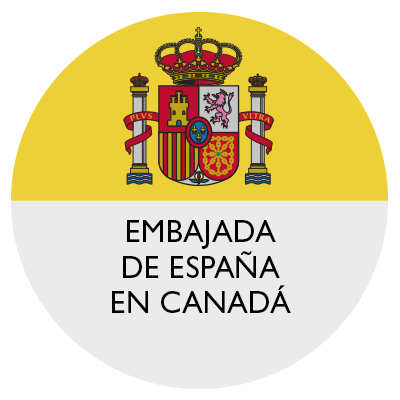Spanish soldiers at the Leningrad Front, Summer 1943
Source:
Mª Xesús Nogueira, Santiago de Compostela
Type: Photograph
Extent: 1 item
59.93873, 30.31623
The illustration shows a platoon of Spanish soldiers, commanded by the Galician sergeant Lino Nogueira, having a rest on the Leningrad front in the summer of 1943. Among the soldiers is an old Russian peasant (mujik) who shares this moment with the occupiers.
The Spanish volunteers of the Blue Division, created in June 1941, were a mixture of professional NCOs and officers and volunteers recruited by the Falange, that included staunch fascists, Catholics and anti-communists who saw the Russian campaign as a continuation of the 1936-1939 Civil War, as well as poor peasants and unemployed workers who enlisted to earn some money. The latter were more numerous among the replacements who arrived from Spain from the beginning of 1942 on.
Most of the Spaniards behaved correctly towards the civilian population in the rear areas of the front, first on the Volkhov River and Lake Ilmen (October 1941-August 1942), then on the southern flank of the siege of Leningrad (August 1942-December 1943). They regarded the Russians as culturally inferior and uncivilized, but they also saw them as victims of Stalinism. Moreover, many saw their earlier stereotypes of Russia as a backward country confirmed when they were confronted with the misery of Russian peasants. They blamed Communism for their poor living conditions, overlooking the fact that the hardships of the German occupation had contributed to what they saw.
The Spanish soldiers certainly looted and stole, and occasionally raped Russian women. But there were no collective reprisals against civilians, and occupiers and occupiers often shared food, housing and leisure. This largely peaceful coexistence was facilitated by the lack of racial indoctrination among Spanish soldiers, as well as the relatively low intensity of partisan activity in the rear. Only sporadic Soviet raids and the offensive launched on 10 February 1943 in the Kolpino sector (the Battle of Krasny Bor, which remains the last major battle fought by Spanish units to this day) broke the monotony of a war of positions. Meanwhile, the civilian population of the city of Leningrad starved to death in large numbers.
The Spanish Blue Division fought from October 1941 until it was withdrawn by the Franco regime in December 1943 under diplomatic pressure from the Allies. Its successor, the Blue Legion, was also forced to return three months later. However, a few dozen Spanish volunteers joined Wehrmacht and Waffen-SS units and continued to fight until the end in May 1945. About 5,000 Spaniards (out of 47,000) were killed in the Soviet Union.
XMNS







